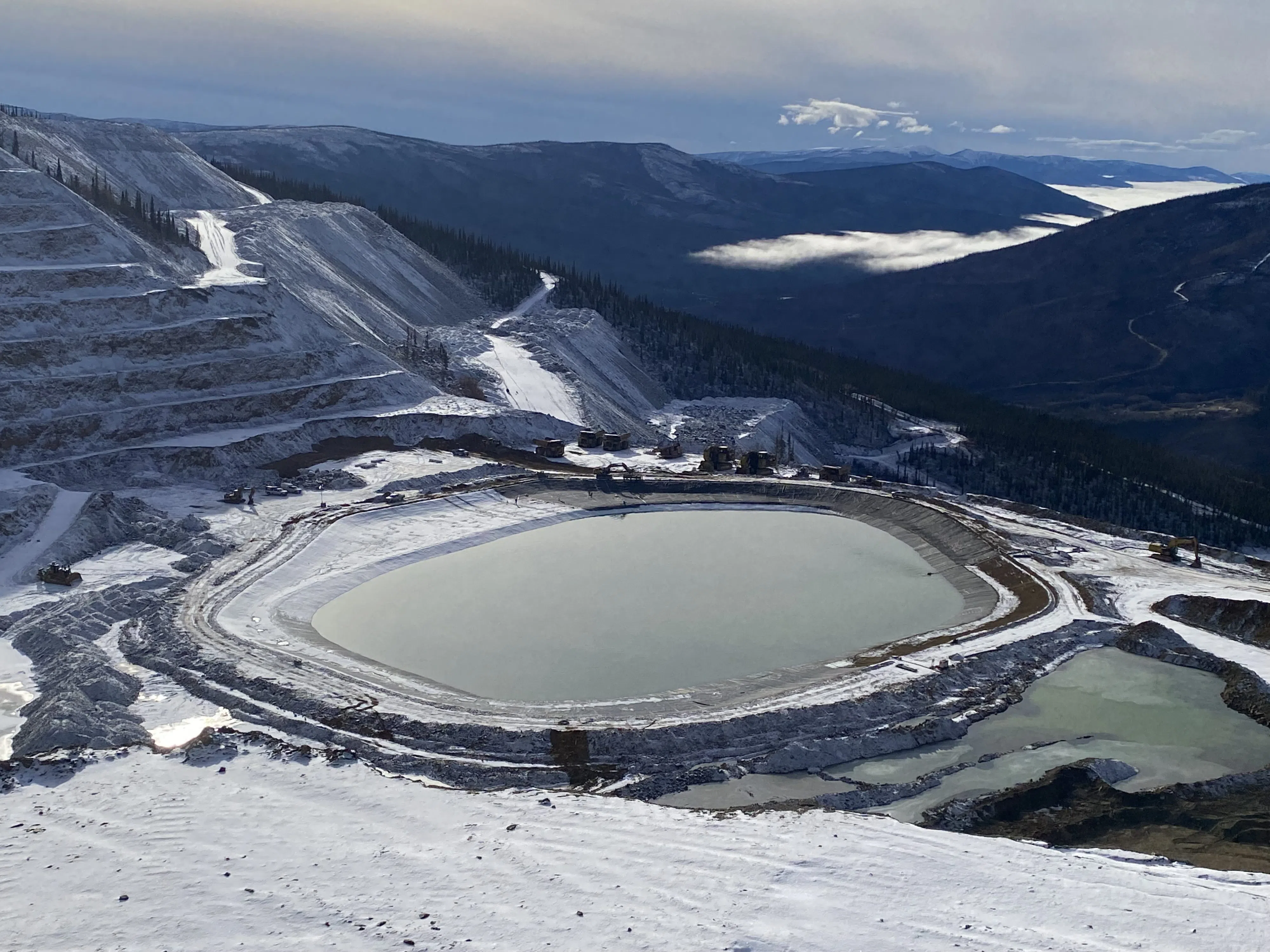
Expanded Pit Pond at the Eagle Gold Mine // Photo Courtesy: Victoria Gold Corp.
WHITEHORSE, YT – In the latest technical briefing on the ongoing work to combat environmental contamination at the Eagle Gold mine, the Yukon Government reviewed the recent decision by Receiver PricewaterhouseCoopers Inc. to discharge copper containing water from the mine’s water storage pond in an attempt to prepare for the upcoming spring melt.
‘Technical advisors working for the receiver have advised that it’s necessary to begin the process of discharging water now, to ensure there’s enough storage space during the spring melt. This is critical to avoid the uncontrolled discharge of treated water containing cyanide’ – Erin Dowd, Manager of Major Mines Licensing with the Yukon’s Department of Energy, Mines and Resources
Erin Dowd, Manager of Major Mines Licensing at the Yukon’s Department of Energy, Mines and Resources, confirmed the water in question is not being discharged directly into Haggart Creek. She also confirmed that the Copper in the water originates from the water treatment process on-site, and that a settling pond meant to reduce it’s presence in the water prior to discharge going forward, will be completed by months end.
When asked why a settling pond wasn’t prioritized sooner, Dowd said it had only recently been identified as a need by the Receiver’s technical experts, and was not originally part of the initial water treatment plan.
Dowd also confirmed the water being discharged is not compliant with the mine’s amended water license or Federal regulations. However, she stressed that it is compliant with the mine’s water license with regards to Cyanide.
Officials at this week’s briefing were not authorized to speak on enforcement measures, and could not confirm the possibility of repercussions for breaching the regulations.







